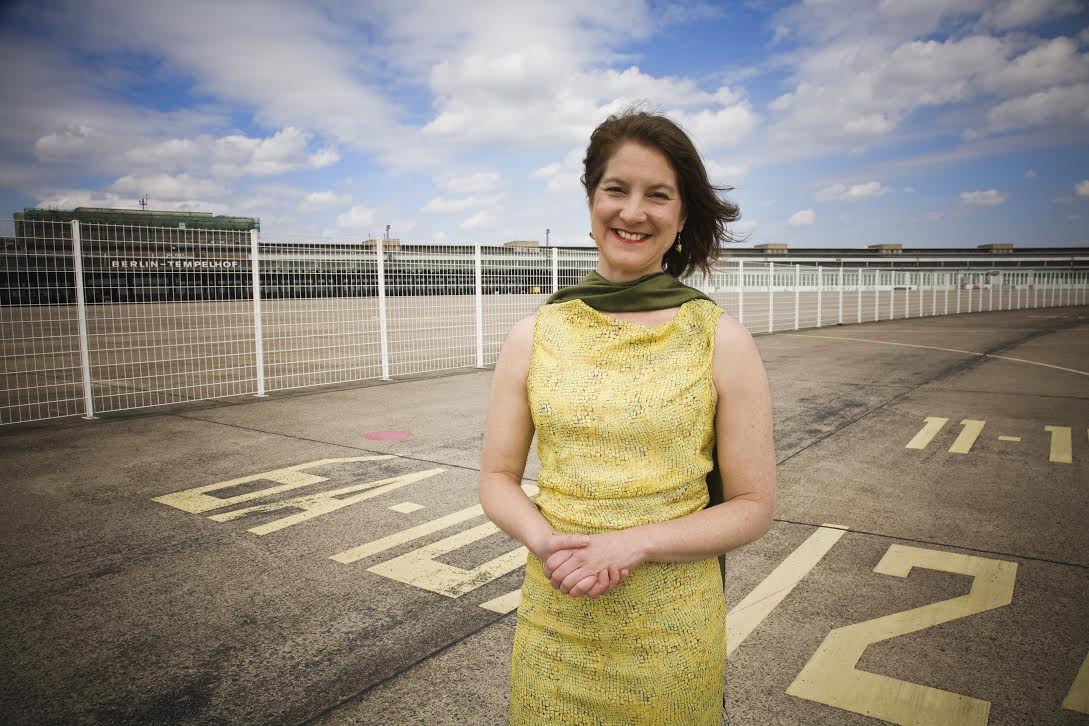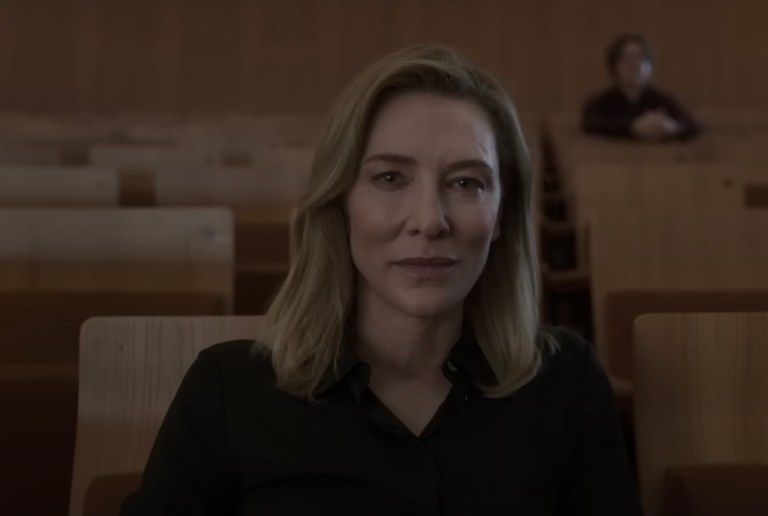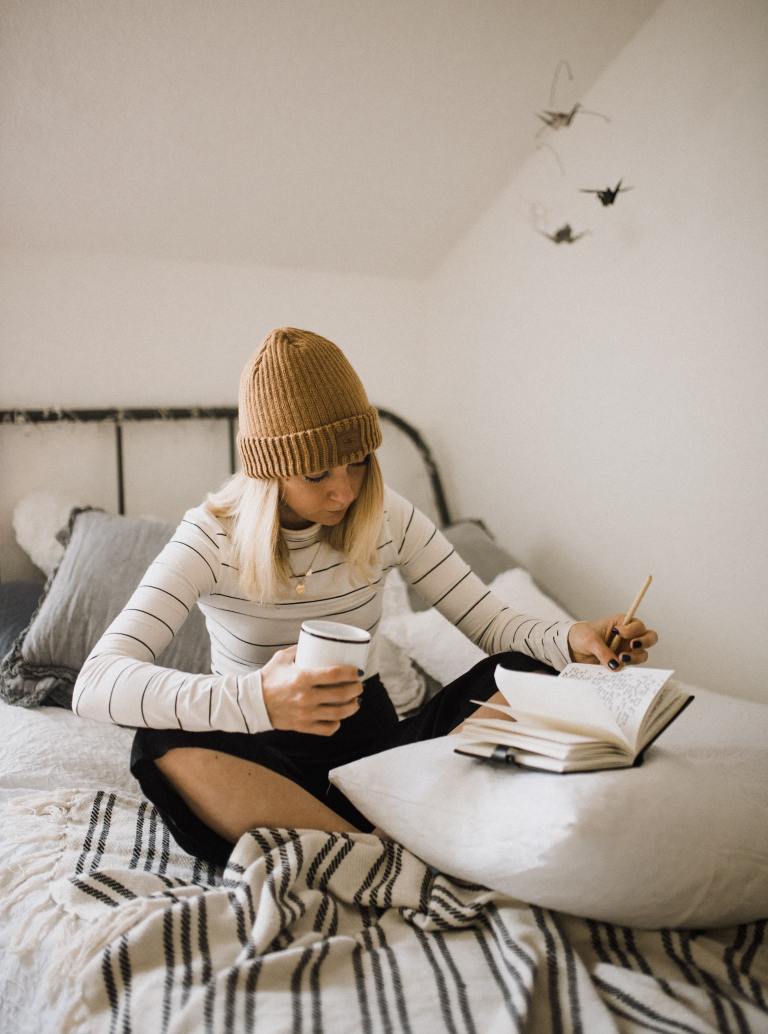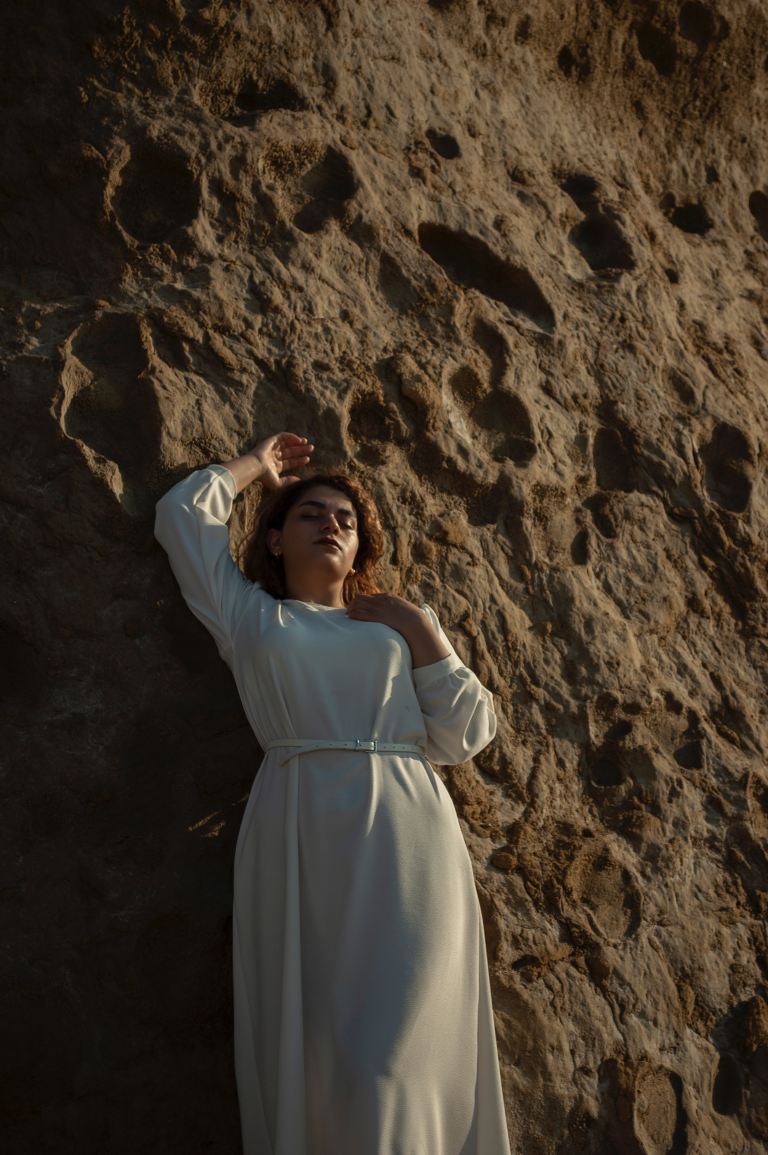Music For Writers: Lisa Bielawa’s Emotional Economy
Now we know that the runway of her huge "Airfield Broadcast" at Tempelhof in Berlin was leading to an intimate flight of a "phantom self" -- composer Lisa Bielawa talks to us of "my own vulnerabilities" in Music For Writers.


‘Communion With Music And Audience’

When I last spoke with composer Lisa Bielawa, she was working up to the Airfield Broadcasts. These were huge events staged in October 2013. In each, as many as 1,000 musicians were involved in what Bielawa calls “spatialized symphonies.” The events were created for two airport-born parks. One is in Germany, the old Tempelhof Airfield in Berlin, famed for the Allies’ 1948-’49 Berlin Airlift. The other is Crissy Airfield in San Francisco. And these sprawling works of site-specific sound and movement were evocations of what Bielawa now describes as “unique social and musical moments that we created in these two vibrant communities.”
As we get back into touch now on the release of her new album, I ask her how the Airfield pieces went, and she tells me that they were fulfilling on two major levels, not just the obvious:
It’s true that part of my personal mission is building community and heightened awareness of place and time, in these large-scale projects. But I am equally fulfilled in my collaborative relationships — many of them over a decade long now — with my “muses”, deeply gifted individuals like Colin Jacobsen, whose artistry inspires me as a radiant example of human communion with music and audience at its very highest form.
Violinist Colin Jacobson is indeed with her now, performing four “meditations” and more, as we turn to an album of special interest to writers and authors. The Lay of the Love from Innova Recordings. It’s the current Album of the Week selection from New York Public Radio’s 24-hour free Internet stream of contemporary classical work, Q2 Music.
And what may surprise you is how focused on literature Bielawa is for her work. Like Christopher Cerrone, her inspirations and intentions are guided and colored by writerly murmurs that can leave you astonished at their aching lines of tension and beauty.
Lisa Bielawa
To get a sense for how compelling the writings behind her work can be, look at her liner notes for the album. There, she introduces her 2006 titular piece, the 25-minute The Lay Of The Love And Death. Bielawa’s love for reading pays off in her own skill with words Not all music people are this eloquent:
In World War I, thousands of copies of a single little book survived in the coat pockets of dead soldiers. It was Rilke’s epic poem, The Lay of the Love and Death of Cornet Christopher Rilke, a work now little-known and often dismissed as juvenilia. …The 23-year-old poet encountered a phantom self in the Cornet – another Rilke whose life was full of wide-eyed courage, action and discovery, but at a terrible cost. The book was written feverishly, in one night. Perhaps the poet Rilke, suddenly aware of his own mortality, was also already aware that, although many of us continue living into more reflective, circumspect years, in a sense all of us die young…the innocence of our young selves cannot survive the various awarenesses that are the inevitable result of a prolonged tender encounter with a troubled world.
In working on the piece, Bielawa writes, she had a strange and moving experience:
A phantom self of my own emerged while I was working on this piece. While exploring a sound world that could engage Colin’s and Jesse’s [Blumberg, baritone] gifts as well as Rilke’s poem, I came face to face with a piano piece I wrote when I was 19. It wanted to be in this piece too, and so it is – it forms the propulsive motive that runs throughout Storm in the House.
This time, Bielawa is out on no windy runways with roving gangs of instrumentalists.
Instead, her Lay of the Love and Death is darkly intimate, as rendered by Jacobson on violin, baritone Blumberg, and pianist Jocelyn Dueck.
Lisa Bielawa
At many points, you’re left without any doubt just how devoted this woman of music is to the world of words. You get this in her choices of heartbreaking boy-soldier poetry to excerpt from the Rilke, as in the third section of this song cycle:
“My good mother,
“be proud: I carry the flag,
“be free of care: I carry the flag,
“love me: I carry the flag – ”
Do you know John Adams’ eerie, aching work for baritone, The Wound-Dresser, based on Civil War poetry of Walt Whitman? If so, you’ll recognize the realm of bravery and fear in which Bielawa is laboring here. If you’re not familiar with this stark corner of the sonic-scape, welcome. You’ll find here a muscular tenderness that you don’t shake off easily. Bielawa has added something new and keenly felt to a singular, shuddering idiom: her own musical vocabulary’s fluency in graceful dissonance.
And this is where we start with my questions and Bielawa’s thoughtful answers.
A ‘Commonplace Book’
Thought Catalog: Lisa, for The Lay of the Love, how did you find the Rilke poem and this background on what it meant to so many guys in World War I?

Lisa Bielawa: One of my guilty secrets is that I was a literature major at Yale, not a music major. This was no accident — trained on violin and piano from a very young age, and already composing, I knew I would be going into music professionally when I went to college. So I decided to major in the thing that was my other ardent love: reading. It’s not an accident that I find books like this remarkable Rilke volume — it’s simply the result of the sheer volume of reading I do. It’s part of my own self-care ritual; when I have a deep engagement with reading, I am happier, more balanced and more connected to my own work.
These pieces on this CD attest to this “emotional economy” that I have found in my life and work. In short: I remember vaguely stumbling across a dusty old edition of the Cornet in my used bookstore meanderings — who knows where and when? These meanderings are frequent indulgences.
TC: Can you tell us a little about this sense of “a phantom of your own” emerging regarding the younger-age piece? Was this as spooky as it sounds? It’s wonderful, frankly, this idea you’re bringing up here of being in touch with what I might call “an innocence of one’s own.” It’s one of these layers of naïveté which, as you write — I love your notes — gets scrubbed away over time, doesn’t it? We lose track. It’s really this that we miss as we age, isn’t it?
 LB: It is pretty spooky! And I am really glad you expanded on this particular point I make in the program notes — the inevitable loss of innocence that comes with growing older, as a kind of dying-young that all of us must mourn and accept. I was trying to sort out why we yearn and long to hear stories about people who die young. There is a wound there in all of us.
LB: It is pretty spooky! And I am really glad you expanded on this particular point I make in the program notes — the inevitable loss of innocence that comes with growing older, as a kind of dying-young that all of us must mourn and accept. I was trying to sort out why we yearn and long to hear stories about people who die young. There is a wound there in all of us.
TC: Speaking of that piano piece for “Storm in the House” [track 8], it’s electrifying. Can you relate now to what you were doing at age 19 in writing this? What I’m wondering is whether there’s ever something we can see in looking back at our younger selves that indicates that we may have known something about ourselves-to-come. Is there anything at all that you can remember from when you were originally writing that piece that might relate to what you’ve ended up doing with it now?
LB: The piano piece I wrote in college was a collaboration with an architect friend, of all things. He made a model of a house with three rooms, and I wrote a piano piece with three movements. He brought his model to my composition lesson and I played the piece at his crit. The professors in both departments were a little flummoxed by it all, from what I remember.
Each movement focused on a particular parameter of musical structure: “One” (first movement) was composed entirely of whole-step melodies, but used counterpoint and different rhythms. “Four” was composed entirely of vertical perfect fourths in both hands, but they could move melodically (horizontally) in any interval and in any rhythm. “Nine” was the movement I used in Storm in the House. It was entirely in 9/8 meter, with running eighth notes the whole time. And it was entirely in unison, and octaves.
It was only years later, in writing this piece, that I realized how strong the material was emotionally, how much untapped expressive potential there was in this propulsive 9/8 material I had written. At 19, I saw only its structural and energetic properties. Encountering it years later, I realized that it, this musical material, wanted to play an expressive-emotional role too. It took me by surprise, actually! It really felt like a long-lost friend from college knocking at my door, now in her thirties, saying, “Hey I want to be in this piece.”
Lisa Bielawa
TC: And did you know that the voice here for the Rilke had to be a baritone? Was this always a male voice in your mind? I’m asking because there’s a perspective in some of the text that some would have interpreted into a Muse-like voice, more detached. I love that you used the male voice — Jesse’s performance is amazing — the voice of the boys who knew this work and thought so much of it.
LB: Jesse himself initiated this whole endeavor. He had a special patron-mentor, Joyce Dutka, who wished to commission a work expressly for him, and he asked me if I would consider writing him a cycle. I had the idea of adding the violin meditations, because I envisioned these particular two young men — Jesse and Colin — as representative of the tension between Rilke the poet and his ancestral cousin Christopher.
It was the time of the second Gulf War, and my mind was very much on young men and how I was so often seeing them in the media, how our society’s relationship to their lives seemed to be shifting as these young men — some of whom I was meeting in New York City — came back from Afghanistan, marked by trauma and loss of innocence.
TC: In general, when you’re finding something in a text that you want to work with, what do you look for? Chris Cerrone talks of having go through a lot of work before he finds a text that really works for him. Do you just read nonstop? Or can you very quickly get at something workable when you want to work on a piece? Another way to ask this, I think, is which usually comes first — the interest in finding a new literary piece, or the piece of writing itself, which compels you to do something with it?
LB: I’m always contributing things I read that have potential as future projects to a “commonplace book” that I keep on my computer. It’s a competitive little document — not many quotes/books make it into this document. I’m years ahead, of course — it would take me three lifetimes to set all of the text in this document, even though I try to be very stringent about what gets included. There’s just so much beautiful and evocative writing out there!
TC: How difficult can rights concerns be in this kind of work? Have you found anything yet that you just couldn’t get freed up to use?
LB: Because of the “commonplace book,” I’m also often a little ahead of the game with rights. I know it can take some time to find the person who needs to give their blessing, track them down, get them to give me that much-needed letter of agreement. So there are a few texts I already have the rights to that I haven’t yet used.

‘In The Face Of Our World’
TC: As for the other two pieces on the album, Wait and Hurry, one of the phrases you use that I love the most is “emotional economy.” In Hurry, you’re talking of that giddiness and simultaneous bafflement at a response that “belies all our understanding of emotional economy.” How much of what you do, in fact, is a matter of getting past our usual levels of emotional economy? I mean, look at Airfield Broadcasts — there are such grand gestures in so much of your work. Isn’t that a big part of what you do? — you raise us up past anything economical and into more extravagant reaches of ourselves? This is how it feels to me. Does it make any sense? — this notion of dispatching our better energies “on demand?”
LB: This is beautiful, Porter! In short, yes. All of this. Your probing question shows that I’m reaching at least one listener in the way that I so deeply wish to. What a gift, thank you! Keep in mind, too, that I am also tending to my own vulnerabilities in the face of our world, when I compose. I need to be reaching into extravagant reaches of my own self too, in order to feel truly alive.
I’m driven by the belief that if I do this faithfully — and it does take deep emotional resources sometimes — I may also be touching this potentiality in my listener. That’s what it’s all about, yes?

‘To Fulfill The World We Hoped To Create’
TC: Yes. It is what it’s all about. I think how many times in books these days, and publishing — which is going through such unprecedented upheavals with digital and the competition of new media — how easy it is for us to forget. This is what it’s all about. To raise ourselves and each other up a notch. I guess that’s what I find in music like yours. Because it shares my world of words and yet it courses out into something a little beyond, a higher abstraction, and I get to come with you for the view from up there.
Can you tell me about your opera, Vireo? Erik Ehn is one of my favorite playwrights. The libretto is his, right? And the full title is Vireo: The Spiritual Biography of a Witch’s Accuser. Set in 16th-century France. And let’s explain for our readers here that Vireo has an unusual aspect, in that it’s being presented in stages, to be released in episodes online and in broadcast formats, right?
LB: Yes, Vireo does seem to be gathering steam as it goes, with more and more potential presenter and media partners, performers, and audiences coming towards us. We are about to shoot episodes three and four in mid-August, and these will probably air in September or early October.
The first half-hour broadcast that you saw, with Kronos Quartet, was actually two 12- to 13-minute episodes joined together in one half-hour broadcast. We’ll continue to capture these brief 10- to 13-minute episodes two at a time.
Erik is another seminal collaborator for me, a towering presence in the development on my own work. Vireo actually began over 20 years ago, when I first met Erik through the New Dramatists Composer-Librettist Studio in New York City. We began work on Vireo back then, and worked on it steadily for a couple of years before deciding that the project was so ambitious that we (or at least I) needed to build myself up both artistically and professionally before I would be ready to fulfill the world we hoped to create.
Now we have the benefit of 20 years more of deep relationships that can all come together through the project, and the concomitant wisdom and maturity that comes along with 20 years’ more living and working. But — as in The Lay of the Love and Death — the musical world of Vireo is also infused with some of that naïveté and wonderment that comes from sounds I first created at the age of 24. Mostly composed anew and/or reworked considerably, the music of Vireo nevertheless draws from material I wrote, notes I put together for the first time, 20 years ago.
TC: Thanks, Lisa, great to have all this work and the chance to talk with you about it.
LB: Great to feel this camaraderie in dialogue about work that means so much to me, as I’m sharing it with so many listeners for the first time. ![]()




